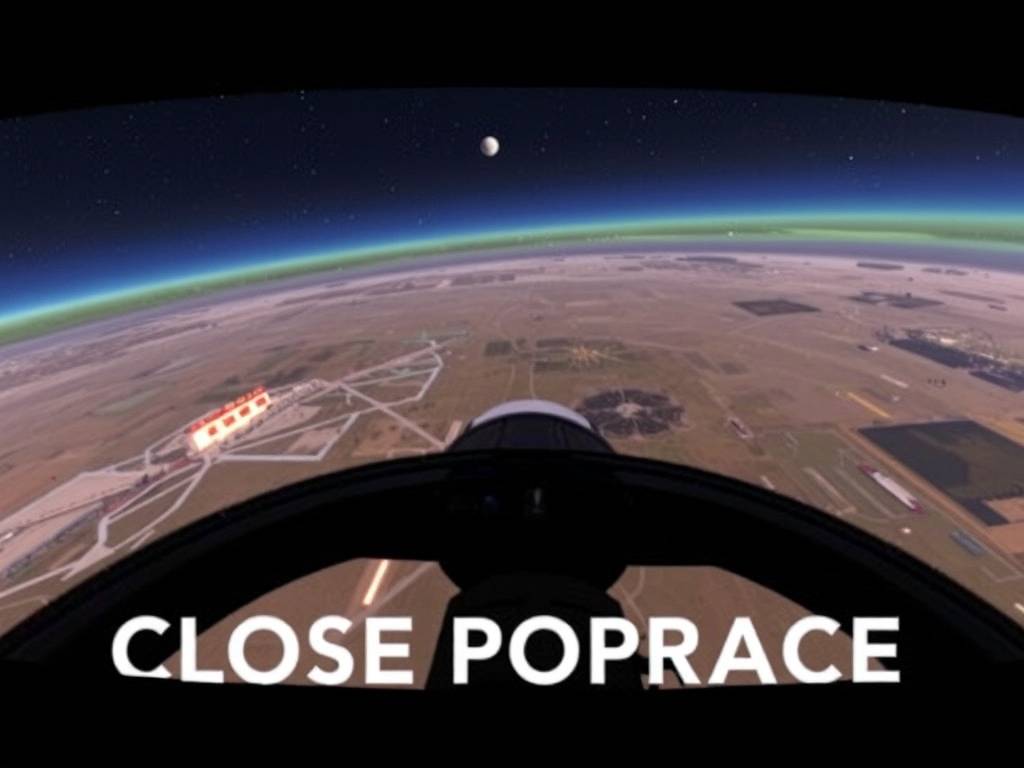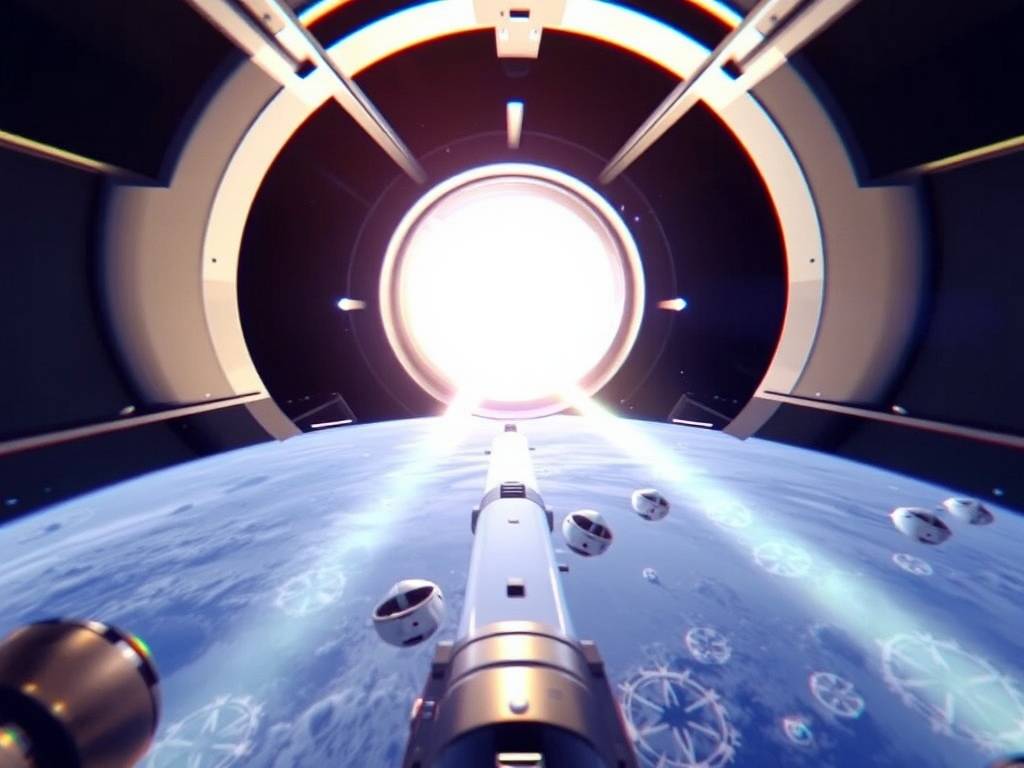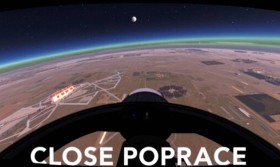Comet Simulator VR: A Groundbreaking Close Approach Update Transforms Virtual Astronomy
Have you ever looked up at the night sky and wondered what it would be like to fly alongside a comet? To witness the majestic, frozen heart of these celestial travelers as they swing around the Sun, their tails blossoming into a spectacular display of cosmic fireworks? For years, this was a dream reserved for astronauts and planetary scientists. But now, with the latest "Close Approach" update for Comet Simulator VR, that dream is your new reality. This isn't just an incremental patch; it's a complete transformation of the virtual astronomy experience, designed to immerse you in the most dynamic and perilous phase of a comet's life.
Until now, most space simulations, including our own earlier versions, focused on the serene beauty of deep space. You could explore the quiet, frozen nucleus in the distant Kuiper Belt or Oort Cloud. But the true drama of a comet's existence unfolds during its close approach to the Sun, the perihelion. This is the moment of its greatest trial and greatest glory. Our development team, comprised of astrophysicists and VR engineers, has spent the last year meticulously crafting this pivotal experience. We've moved beyond static models to create a living, breathing, and physically accurate simulation of a comet's fiery passage through the inner solar system.

So, what exactly does the Close Approach Update bring to your virtual reality headset? Let's dive into the core features that redefine interactive cosmic education.
The Dynamic Comet Nucleus: A World Awakening
The heart of the update is the completely overhauled comet nucleus. No longer a simple, static lump of ice and rock, it is now a dynamic, evolving world. As you pilot your virtual survey probe closer to the Sun, you'll witness the surface transforming in real-time. Hidden volatile ices beneath the coal-dark crust begin to sublimate—turning directly from solid to gas without becoming a liquid. This process creates immense pressure.

You'll see real-time outgassing and jet formation as these pressurized gases burst through weak spots in the crust, creating powerful geysers that shoot kilometers into the blackness of space. These aren't just visual effects; they have a physical impact. Fire a jet at full throttle near the surface, and you can use the force of these natural thrusters to alter your orbit or even gently nudge smaller pieces of debris. This introduces a new layer of strategic navigation around active comet terrain, where you must constantly monitor surface activity to avoid being caught in a sudden, powerful eruption.
The Birth of Tails: A Spectacular Visual Phenomenon
This is where the magic happens, and the VR comet tail visualization reaches an unprecedented level of fidelity. We've developed a new particle physics engine that simulates two distinct tails forming from the outgassing nucleus.
First, the iconic dust tail formation process. As the gas jets erupt, they carry away millions of tiny dust particles embedded in the ice. Sunlight reflects off these particles, creating a brilliant, gently curving tail that often appears white or yellowish. In VR, you can fly right through this stream, watching the motes of ancient dust glitter around you, each one a speck of primordial material from the dawn of our solar system.
Second, and even more mesmerizing, is the ion tail dynamics simulation. The Sun's intense ultraviolet light ionizes some of the gases, stripping them of electrons and creating a plasma. The solar wind—a constant stream of charged particles from the Sun—then carries this ionized gas directly away from the Sun, forming a second, distinct tail. This ion tail often glows with a faint electric blue and can stretch for hundreds of millions of kilometers. The update allows you to see the interaction between the solar wind and comet plasma in a stunning visual display, with waves and kinks forming as the comet passes through regions of the solar wind with varying speeds and densities.
Mastering the Perihelion Passage
The climax of your VR solar system exploration is the perihelion passage itself. We've created several historically accurate and fictional comet orbits for you to experience. You can ride alongside a comet like Halley, or guide a new, fictional comet on a sungrazing orbit that brings it perilously close to our star.
The sense of scale and danger is palpable. The Sun swells to a terrifying, magnificent inferno in your field of view. The outgassing becomes a continuous, violent storm across the nucleus's surface. Your instruments will scream with warnings as radiation levels spike and the thermal load on your virtual probe increases. This is the ultimate test of your understanding of navigating comet trajectories near the Sun. You'll need to use the natural jet activity for course corrections while avoiding catastrophic breakdowns. Successfully guiding your comet through this trial and watching it swing back out into the colder reaches of the system is an incredibly rewarding achievement.
An Immersive Educational Toolkit
We firmly believe that the most powerful learning happens when you're having fun. The Close Approach Update is packed with tools that make complex astrophysics intuitive and engaging.
The new Interactive Orbital Mechanics HUD projects your comet's path directly into your field of view, showing gravitational influences, velocity changes, and the changing balance of forces. You can pause the simulation at any moment to trigger a real-time cometary activity analysis, which breaks down the composition of the outgassing jets, the mass loss rate, and the pressure building inside the nucleus.
For the first time in any simulation, we've introduced a virtual reality solar system exploration mode that lets you not just follow one comet, but track multiple comets simultaneously. You can watch from a god-like perspective as several comets make their approach, comparing their different behaviors, tail lengths, and survival rates. This unique interactive astronomy learning tool provides a system-wide understanding of how small bodies behave, perfect for students, educators, and anyone with a passion for the cosmos.
Your Personal Cosmic Playground
Beyond the guided experiences, the update supercharges the sandbox mode. You can now customize nearly every aspect of your comet. Adjust its size, composition (ice-to-dust ratio), and orbital eccentricity. What happens if you create a comet made mostly of dry ice and send it on a sungrazing trajectory? The new physics engine will calculate the result, which is often a spectacular disintegration. This hands-on celestial mechanics experience encourages experimentation and deepens your intuitive grasp of the science.
The Comet Simulator VR: Close Approach Update is more than a new feature set. It's a gateway to understanding one of the most awe-inspiring events in our solar system. It answers the question of what it's truly like to be there, to feel the violence of a comet's rebirth near the Sun, and to appreciate the delicate balance of forces that shape these beautiful, ephemeral visitors to our skies. Strap on your headset, initiate the launch sequence, and prepare to witness the universe in motion, right before your eyes. The cosmos has never felt so close, or so alive.


















